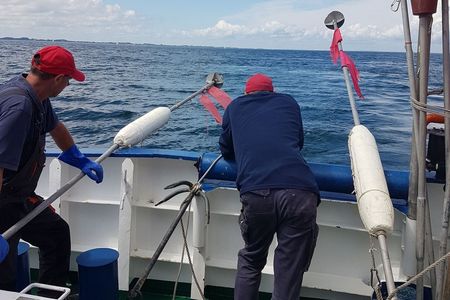Explosives found in North Sea fish

In the CONMAR project, Thünen researchers have for the first time examined fish from near coastal munitions dumping areas in the North Sea for residues of the prominent carcinogenic explosive trinitrotoluene (TNT). A highly sensitive analytical device (LC-MS/MS) was used for the detection. The researchers had previously used this to detect contamination with TNT from old munitions in fish from the Baltic Sea. In the Baltic Sea, the munitions sometimes lie openly on the sea floor and the fish have direct contact. In the North Sea, the situation is very different: here, a large part of the dumped munitions is now hidden under sand and silt, and the constant current quickly distributes and dilutes escaping chemicals. Up to now, there have been hardly any studies on fish from the German North Sea.
This has changed with the present study: near some dumping areas in the German Bight, it has now been clearly proven that fish are contaminated with the degradation products of TNT. The concentrations were low (ng/ml); Nevertheless, they were clearly detectable with the sensitive measuring system. The highest signals were found in fish near a munition dumping area at the island of Wangerooge. However, none of the chemicals was found in most of the fish tested. The diseases, parasites and health indicators examined in the same fish showed no evidence of any impairment of fish health due to munitions.
The munitions have been in the German part of the North Sea for many decades: the chemicals are leaking out and are found in fish. Even if the contamination of fish is currently moderate, we advocate including explosives in fish in environmental monitoring.
These results were published in a new study:
Kammann U, Töpker V, Schmidt N, Rödiger M, Aust M-O, Gabel M, Scharsack JP (2024) Explosives leaking from dumped munition contaminate fish from German coastal waters: a reason for chronic effects? Environmental Sciences Europe. 36:116. https://doi.org/10.1186/s12302-024-00942-5
Sampling the fish



![[Translate to English:] [Translate to English:]](/media/_processed_/2/9/csm_Embryo-Exp_Gelege_9F_dpf5-200513111619_c8534a8199.jpg)
![[Translate to English:] [Translate to English:]](/media/_processed_/2/9/csm_Embryo-Exp_Gelege_9F_dpf5-200513111619_9027994d44.jpg)




